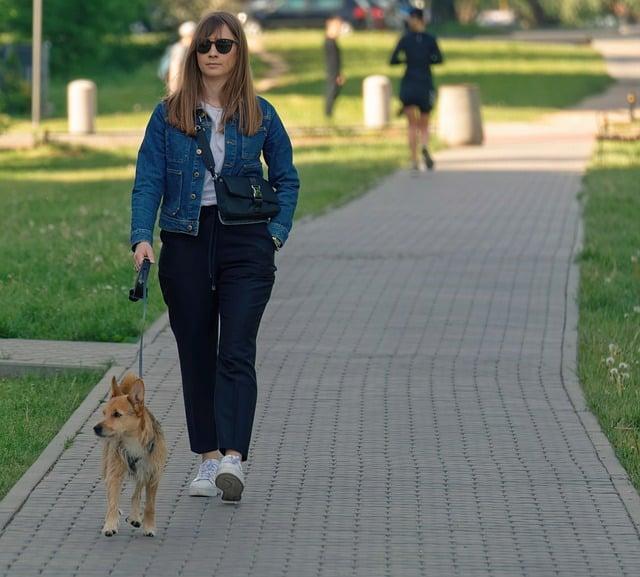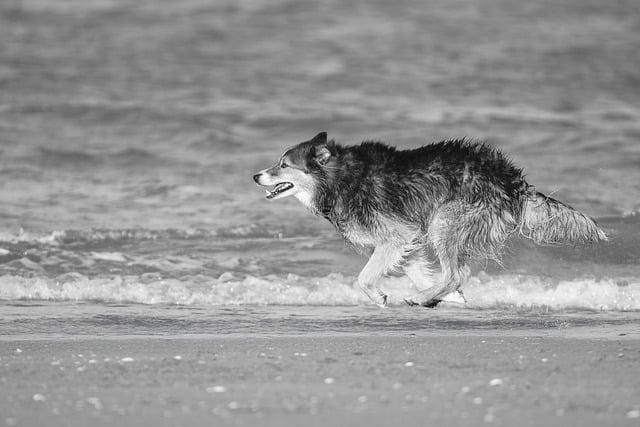Imagine standing face-to-face with a creature so majestic that it commands the attention of everyone around. Meet the Great Dane, the towering gentle giant known for its friendly demeanor and impressive stature. Next, we have the St. Bernard, a heroic breed that once saved lives in the Swiss Alps, embodying loyalty and strength. the Mastiff, with its massive build and protective nature, is a true guardian. These three breeds not only capture hearts with their size but also with their unwavering companionship. Discover the joy of having one of these magnificent dogs in your life!
Contents
- Understanding the Unique Characteristics of the Largest Dog Breeds
- Evaluating the Health Considerations for Giant Dog Owners
- Creating an Ideal Environment for Your Large Canine Companion
- Choosing the Right Training Techniques for Big Dogs
- Q&A
Understanding the Unique Characteristics of the Largest Dog Breeds
When it comes to the largest dog breeds, size is just one aspect of their unique characteristics. These gentle giants often possess a calm demeanor, making them excellent companions for families and individuals alike. Their impressive stature can be intimidating, but many of these breeds are known for their affectionate nature and loyalty. Understanding their temperament is crucial for potential owners, as it helps in creating a harmonious living environment.
One of the most notable features of these breeds is their **physical strength**. Dogs like the Great Dane and the Mastiff are not only tall but also incredibly muscular. This strength requires responsible ownership, as proper training and socialization are essential to ensure they behave well in various situations. Additionally, their size can lead to specific health concerns, making regular veterinary check-ups and a balanced diet vital for their well-being.
Another characteristic that sets these large breeds apart is their **exercise needs**. While they may enjoy lounging around the house, these dogs require ample physical activity to maintain their health and happiness. Regular walks, playtime, and mental stimulation are crucial to prevent boredom and destructive behavior. Owners should be prepared to invest time in daily exercise routines to keep their furry friends fit and engaged.
the **space requirements** for large dog breeds cannot be overlooked. These dogs thrive in environments where they have room to move freely. Whether it’s a spacious backyard or nearby parks, having adequate space is essential for their physical and mental health. Prospective owners should consider their living situation carefully, ensuring they can provide the necessary environment for these magnificent animals to flourish.
Evaluating the Health Considerations for Giant Dog Owners
Owning a giant dog comes with a unique set of health considerations that potential owners must take into account. These majestic animals, while often gentle giants, can be prone to specific health issues that require vigilant monitoring and proactive care. **Understanding these health risks is crucial** for ensuring a long, happy life for your canine companion. Regular veterinary check-ups, a balanced diet, and appropriate exercise are essential components of maintaining their health.
One of the most significant concerns for large breeds is their susceptibility to joint problems, particularly hip and elbow dysplasia. These conditions can lead to chronic pain and mobility issues, significantly affecting their quality of life. **To mitigate these risks**, it’s important to provide a diet rich in nutrients that support joint health, such as omega fatty acids and glucosamine. Additionally, maintaining a healthy weight is vital, as excess weight can exacerbate joint stress and lead to further complications.
Another health consideration is the risk of bloat, a life-threatening condition that can affect deep-chested breeds. Bloat occurs when the stomach fills with gas and twists, leading to severe complications if not treated immediately. **Preventive measures** include feeding smaller, more frequent meals, avoiding vigorous exercise immediately after eating, and being aware of the signs of distress in your dog. Educating yourself about this condition can be lifesaving and is an essential part of responsible ownership.
Lastly, giant dogs often have shorter lifespans compared to smaller breeds, which can be emotionally challenging for owners. **Being proactive about their health** can help extend their lives and improve their overall well-being. Regular dental care, vaccinations, and parasite prevention are critical components of their healthcare regimen. By staying informed and committed to your giant dog’s health needs, you can ensure that your time together is as fulfilling and joyful as possible.
Creating an Ideal Environment for Your Large Canine Companion
Creating a comfortable and safe space for your large canine companion is essential for their well-being and happiness. Start by ensuring that your home has ample room for them to move around freely. Large breeds, such as Great Danes or Mastiffs, require more space than smaller dogs, so consider designating a specific area where they can stretch out and relax. This could be a cozy corner with a large dog bed or a dedicated room where they can feel secure and at ease.
Another crucial aspect is the flooring. Large dogs can be prone to joint issues, so opt for materials that provide traction and support. **Carpet** or **area rugs** can help prevent slipping, while softer surfaces can cushion their joints. Additionally, consider using **non-toxic** cleaning products to maintain a safe environment, as large dogs often spend a lot of time on the floor and may be more susceptible to harmful chemicals.
Outdoor space is equally important for large breeds. A securely fenced yard allows them to roam and play freely, which is vital for their physical and mental health. Ensure the fence is tall enough to prevent jumping and that there are no gaps for them to escape. Incorporate elements like **shade** and **water** stations to keep them comfortable during outdoor playtime, especially in warmer weather.
Lastly, socialization is key to a happy and well-adjusted large dog. Create an environment that encourages positive interactions with other pets and people. Regular trips to the dog park or organized playdates can help your canine companion develop good social skills. Remember to monitor their interactions, as large dogs can unintentionally overwhelm smaller breeds. By fostering a nurturing and stimulating environment, you’ll ensure your large dog thrives both physically and emotionally.
Choosing the Right Training Techniques for Big Dogs
When it comes to training big dogs, selecting the right techniques is crucial for fostering a well-behaved and obedient companion. Large breeds often possess unique temperaments and physical capabilities that require specialized approaches. Understanding their needs can significantly enhance the training experience, making it both effective and enjoyable for both the dog and the owner.
One of the most effective methods for training larger breeds is **positive reinforcement**. This technique involves rewarding desired behaviors with treats, praise, or playtime, which encourages the dog to repeat those behaviors. Big dogs respond particularly well to this approach, as it builds trust and strengthens the bond between the dog and the owner. By focusing on rewards rather than punishment, you create a positive learning environment that can lead to quicker and more reliable results.
Another essential technique is **consistency**. Large dogs thrive on routine and clear expectations. Establishing a set of commands and sticking to them helps the dog understand what is expected. This consistency should extend to all family members to avoid confusion. For instance, if you teach your dog to sit, everyone should use the same command and hand signal. This uniformity not only aids in training but also reinforces the dog’s understanding of household rules.
incorporating **socialization** into training is vital for big dogs. Exposing them to various environments, people, and other animals helps them develop confidence and reduces the likelihood of behavioral issues. Structured playdates, obedience classes, and trips to dog parks can provide valuable experiences that enhance their social skills. Remember, a well-socialized big dog is not only a joy to have but also a safer companion in diverse situations.
Q&A
-
What are the three biggest dog breeds?
The three biggest dog breeds are the Great Dane, the Saint Bernard, and the Mastiff. These breeds are known for their impressive size and gentle temperament, making them popular choices for families and individuals alike.
-
How much do these large dog breeds typically weigh?
Great Danes can weigh between 110 to 175 pounds, Saint Bernards usually range from 120 to 180 pounds, and Mastiffs can weigh anywhere from 120 to 230 pounds. Their substantial weight requires responsible ownership and proper care.
-
Are large dog breeds suitable for families?
Yes, large dog breeds like the Great Dane, Saint Bernard, and Mastiff are often great family pets. They are known for their loyalty, protective nature, and affectionate demeanor, making them excellent companions for children and adults alike.
-
What are the exercise needs of these large breeds?
While they are large, these breeds do not require excessive exercise. Daily walks and playtime are essential to keep them healthy and happy. However, it’s important to monitor their activity levels to prevent joint issues common in larger dogs.
understanding the three biggest dog breeds not only highlights their impressive stature but also their unique needs and characteristics. Embrace the joy and responsibility that comes with these gentle giants, and consider welcoming one into your home.

大家好,我是彼得潘,專業的手法身體治療師。我喜歡探索和研究各種主題,並透過與人工智慧的合作分享專業、實用、有趣的文章。我們定期進行人工審核,以確保內容的準確性。如果您發現文章中有任何不準確的地方,請隨時與我們聯繫,我們會及時糾正。您可以透過 [email protected] 與我們聯繫。



